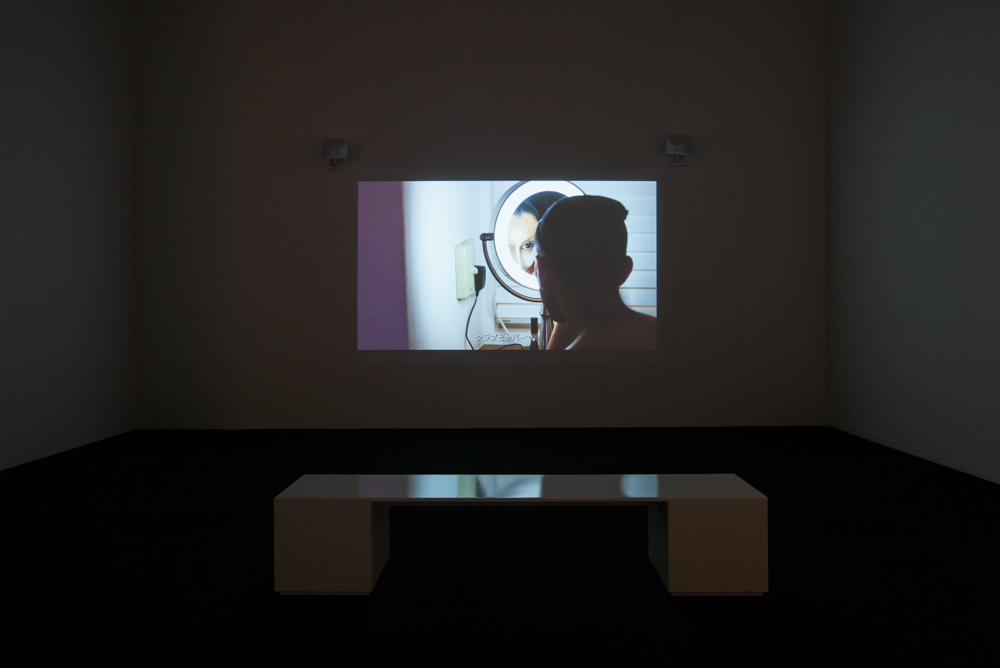Flower Names
Works | 2018年05月16日(水)
花の名前/Flower Names, 2015-
「花の名前」は、五章からなる映像作品。一章は花の妖精クロリスが風の神ゼピュルスにレイプされ、その償いとして花の神フローラへと格上げされ花の園に暮らすという神話の語りが、沖縄の風景に重ねられる。二、三章と、ゼピュルスの神話、クロリスにまつわる歌曲を作った作曲家でありプルーストの恋人だったレイナルド・アーンにまつわる物語、神々の食べ物「アンブロワジー」についてが語られる。続く四章では、沖縄でドラッグクイーンとして活動する米兵がメイクをしながらその活動や沖縄での暮らしについて語り、そして最終章で彼女がレイナルド・アーンの「クロリスに」を歌う。ループ構造を持つ作品は再び一章、クロリスの神話に戻る。神話から続くかのようにも思える暴力の連鎖を描いた作品。2016年の六本木クロッシング展ではいくつかの写真作品に加え、「私は両方の世界を見た」と沖縄の男性がジョニ・ミッチェル「Both Sides Now」を歌う映像作品が加えられ、負の循環を超えた先にあるささやかな希望を描いた。丸亀猪熊弦一郎現代美術館「愛すべき世界」(2015)、森美術館「六本木クロッシング2016:僕の身体(からだ)、あなたの声」において、それぞれ異なった構成のインスタレーションとして発表。『あいちトリエンナーレ2016: 虹のキャラバンサライ』(2016年)の映像プログラムでも上映された。
—
Flower Names, the five-chapter video piece, begins with a tale of Chloris, the flower nymph who was raped by the wind god Zephyrus. To compensate for his actions, Zephyrus made Chloris the goddess of flowers, naming her Flora and giving her a land filled with flowers. The myth reminded me of the violent incidents that occurred in American-occupied Okinawa, where servicemen committed brutal acts such as raping local women or leaving their lovers/wives and behind when they returned to the States. The following chapters tell tales of romance and violence: the myth of a male love triangle between Zephyrus, Apollo and Hyacinthus that Mozart tried to turn into an opera at a time when same-sex relationships were taboo; the romantic relationship between Marcel Proust and the composer Reynaldo Hahn, who composed a song called “A Chloris” (To Chloris) that celebrated Chloris’ beauty in a rather anachronistic baroque melody; and the story of an American serviceman stationed in Okinawa, who was also a drag queen. The latter sees the serviceman talk about how the repeal of “Don’t Ask, Don’t Tell” changed but also didn’t change the status quo in America’s military bases. The piece ends with him lip-syncing “À Chloris” in drag, with a mix of awkwardness and grace.
Installation View at Marugame Genichiro-Inokuma Museum of Contemporary Art (MIMOCA), Marugame, 2015
Photo: Keizo Kioku
Photo Courtesy: MIMOCA
Installation Views at Mori Art Museum, Tokyo, 2016
Photo: Nagare Satoshi
Photo courtesy: Mori Art Museum














